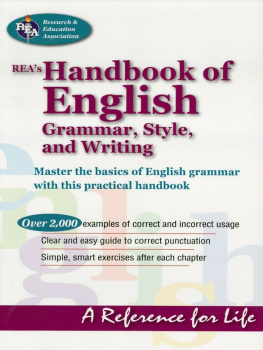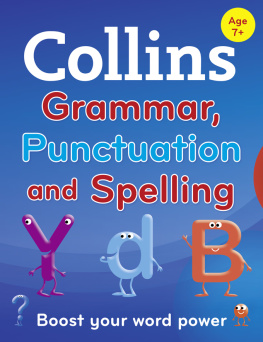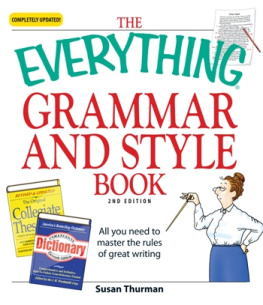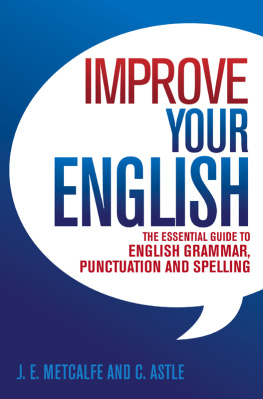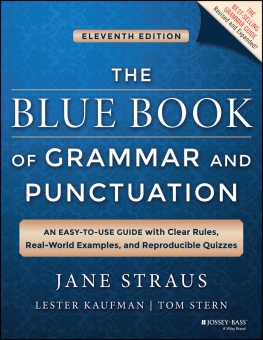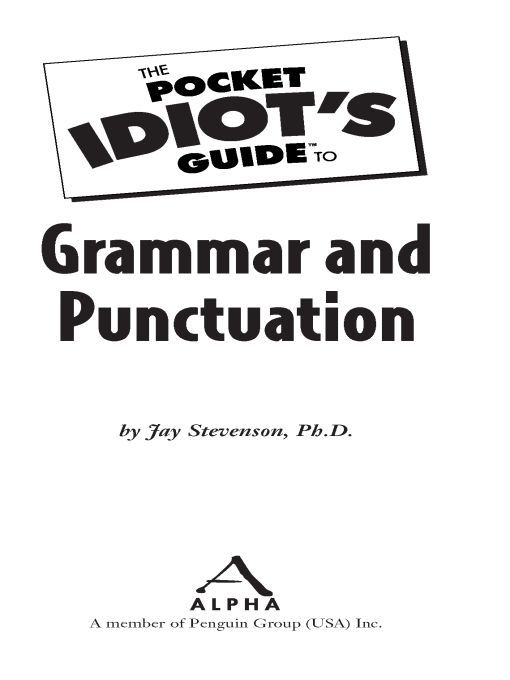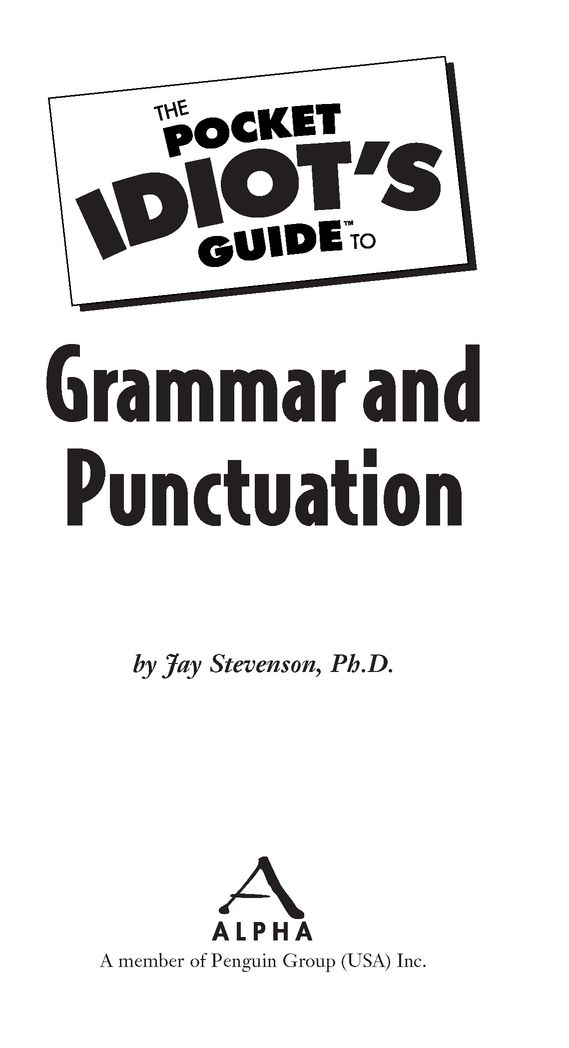Table of Contents
Introduction
English grammar and punctuation can seem pretty complicated, especially if youre not used to thinking in grammatical terms. Grammar and punctuation have to be complicated because we use them in so many complicated waysto represent and explain concepts, ideas, and plans; communicate; ask for things; persuade; even lie. If you think about it, its kind of amazing just how much our language does.
As any good worker will tell you, its important to use the right tools for a job. Grammar is, in essence, a set of rules and conventions that show just what all the different tools in the linguistic toolkit do and how they should be combined into accurate, meaningful phrases, clauses, sentences, and paragraphs.
The basics, fortunately, are fairly simple and may be at least somewhat familiar from English class and from your own experience with language. And after you have the basics down, the rest should come together fairly easily.
For this reason, few people read books on grammar and punctuation from cover to cover. Most have specific problems they want help with. Nevertheless, one of the really nifty things about grammar is the way it all fits together. To really understand any of it well, it helps to have a sense of what it all is. This book is organized both to help people get the big picture of grammar and punctuation to see how their various features work together, and also to be used as a quick reference for questions and problems as they crop up.
The book is divided into two main parts:
Part 1, Words at Work, covers the rules and conventions of grammar, including all the parts of speech and how theyre inflected and combined with one another into phrases, clauses, and sentences. I also identify and sort out common problems and mistakes along the way.
Part 2, Marks of Distinction, sets forth the rules of punctuation as laid down by the venerable folks at the Modern Language Association. (For more information on the Modern Language Association and the style used in this book, see the following A Note on Style and the Modern Language Association [MLA] section.)
Two appendixes follow the chapters. The first is a glossary of grammatical terms; the second is a compendium of common grammatical problems. Lastly, theres an index for quickly locating pretty much everything covered in this book.
In addition, this book is filled with sidebars offering helpful and interesting orts of information on issues related to the topic at hand in the text. These sidebars come in four varieties:
Grammar Jammer
Not all grammar is cut and dried. Heres where you can learn about some of its more interesting and unexpected features.
Parse Words
Read this sidebar for handy definitions of terms employed by grammarians for specialized concepts.
Grammar Rules, OK!
Heres a correct precept in a box. If life were only this simple, wed always be right!
Margin of Error
These sidebars hold advice on what not to do. If youve ever found yourself straying from the correct path, you may well find the error of your ways in one of these sidebars.
A Note on Style and the Modern Language Association (MLA)
If youre writing for publication, including self-publication and publication for business purposes, youll want to be consistent in formatting your work and in citing and documenting your sources. For these and other editorial concerns, consult a style guide. Style here refers not to writing style, but to editorial style. There are many style guides out there and virtually all professional editors work closely with one of them in editing a manuscript for publication.
The most influential, commonly used styles are those developed by the Modern Language Association (MLA), by the American Psychological Association (APA), and by the University of Chicago Press (UCP). There are many others as well, but the MLA, APA, and Chicago styles are the most widely followed and recognized.
MLA style is intended for scholarly publications as well as for papers submitted in course work. Where appropriate, I have followed it here, because I am most familiar with it as a student and teacher of English. APA style is used for publications in the social and behavioral sciences. Chicago style is commonly used by publishing professionals in various fields.
Acknowledgments
Id like to thank all my English teachers, from nursery school to post-doc study, for never ceasing to help me use language better. I humbly hope most of them could approve of my efforts in writing this and audaciously dream that this might help others as they have helped me.
Special Thanks to the Technical Reviewer
The Pocket Idiots Guide to Grammar and Punctuation was reviewed by an expert who double-checked the accuracy of what youll learn here, to help us ensure that this book gives you everything you need to know about mastering grammar and punctuation in a hurry. Special thanks are extended to Sharon Sorenson.
Trademarks
All terms mentioned in this book that are known to be or are suspected of being trademarks or service marks have been appropriately capitalized. Alpha Books and Penguin Group (USA) Inc. cannot attest to the accuracy of this information. Use of a term in this book should not be regarded as affecting the validity of any trademark or service mark.
Part 1
Words at Work
Part 1 deals with all the parts of speech and how to make em fit together into proper and useful English. For each part of speech, you learn how it can be inflected (change form), how it combines with other parts of speech, and what common problems arise in its use.
Chapter 1
Grammars Working Parts
In This ChapterWhy so many people hate grammar
Good grammar and good writing
The eight parts of speech
Language is the subtlest, most useful tool ever used. Grammar is a set of specifications that show how the tool works and should be used. This tool (language) has different working parts, known as the parts of speech. This chapter introduces each of them.
But first, lets exorcise some grammar demons. We can best deal with these demons by dragging them out into the open and talking about them.
Getting Started with Grammar
Grammar is a set of conventions that structure language. All languages have grammar, so everyone who learns to speak a language learns to use that languages grammar more or less well, whether or not they ever study grammar formally. This means that if youre a human being, you have an innate capacity to make and use language according to grammatical principles, even if youre not consciously aware of them. Practice and study can help make you overtly conscious of the grammar you already use. That consciousness enables you to fix or avoid grammatical mistakes more easily and speak and write with greater clarity. Yeah, grammar!



